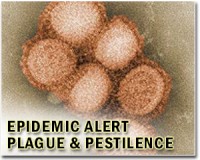| . |  |
. |
Geneva (AFP) Nov 23, 2010 The number of new cases of HIV/AIDS has dropped by about one-fifth over the past decade but millions of people are still missing out on major progress in prevention and treatment, the UN said Tuesday. In 2009, 2.6 million people contracted the HIV virus that causes AIDS, down 19 percent from the 3.1 million recorded in 2001, said UNAIDS, the UN agency spearheading the international campaign against the disease. "Fifty-six nations around the world have stabilised or significantly reduced infections," UNAIDS Executive Director Michel Sidibe told journalists. But about half of the 60 million people who caught HIV/AIDS since the start of the pandemic 30 years ago have died, according to the agency. Sidibe urged caution over the growing impact of prevention measures and medical treatment highlighted in the 2010 global report on the AIDS epidemic and warned about a slowdown in finance. "We have halted and begun to reverse the epidemic. Fewer people are becoming infected with HIV and fewer people are dying from AIDS," he said. "However we are not yet in a position to say 'mission accomplished'," he added in the report. About 33.3 million people worldwide were living with the HIV virus that causes AIDS at the end of last year -- about 100,000 less than in 2008. The UNAIDS chief heralded a "prevention revolution" in the pipeline, including a gel that could help women protect themselves, and a breakthrough on drugs treatment. The report showed that treatment has made huge inroads in the past five years. Some 5.2 million people in poor countries had access to costly lifesaving anti-retroviral medicine in poor countries last year, compared to 700,000 in 2004. However, overall "demand is outstripping supply," Sidibe warned, while investment against HIV/AIDS stopped growing for the first time last year. "If we stop financing, the five million people who are under treatment will start to die," he warned. An estimated 10 million people who need anti-retrovirals do not have them, while "stigma, discrimination, and bad laws continue to place roadblocks for people living with HIV and people on the margins" of society, he added. The report found that epidemics in sub-Saharan Africa, the worst hit continent, were declining or stable. AIDS-related deaths there fell by 20 percent over the past five years, while the number of people living with the HIV declined from an estimated 2.2 million to 1.8 million. In Asia, HIV stabilised at a caseload of about 4.9 million, with "significant" progress on tackling mother-to-child transmission, UNAIDS said. In India, Nepal and Thailand the rate of new infections fell by more than a quarter. However, the annual death toll has grown by about 50,000 to 300,000 in Asia over a decade. The pattern of disease within highly populated countries such as China and Indonesia can vary signifcantly. The biggest inroads were found in North America and west and central Europe, with a 30 percent decline in the caseload over a decade. But new infections rose there slightly last year and UNAIDS signalled a resurgence of the epidemic among male homosexuals due to unprotected sex. In eastern Europe and central Asia, the number of people with the virus has almost tripled over the past decade to reach about 1.4 million, while deaths grew fourfold. Russia and Ukraine account for nearly 90 percent of new infections in the region.
Share This Article With Planet Earth
Related Links Epidemics on Earth - Bird Flu, HIV/AIDS, Ebola
 Fourth cholera case found in Dominican Republic
Fourth cholera case found in Dominican RepublicSanto Domingo (AFP) Nov 22, 2010 Authorities in the Dominican Republic, which shares the Caribbean island of Hispaniola with cholera-stricken Haiti, have discovered a fourth case of the disease, officials said Monday. Dominican Health Minister Bautista Rojas said the victim, a 20-year-old woman who resides in the region around the capital Santo Domingo, was being treated at a local hospital and was not considered to be in d ... read more |
|
| The content herein, unless otherwise known to be public domain, are Copyright 1995-2010 - SpaceDaily. AFP and UPI Wire Stories are copyright Agence France-Presse and United Press International. ESA Portal Reports are copyright European Space Agency. All NASA sourced material is public domain. Additional copyrights may apply in whole or part to other bona fide parties. Advertising does not imply endorsement,agreement or approval of any opinions, statements or information provided by SpaceDaily on any Web page published or hosted by SpaceDaily. Privacy Statement |